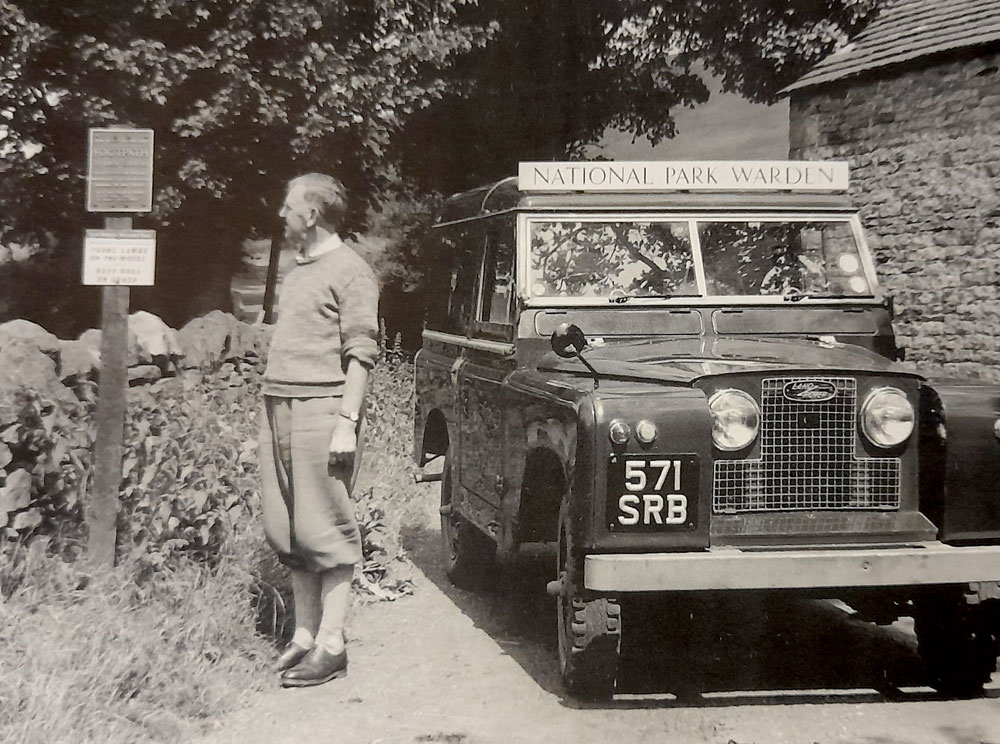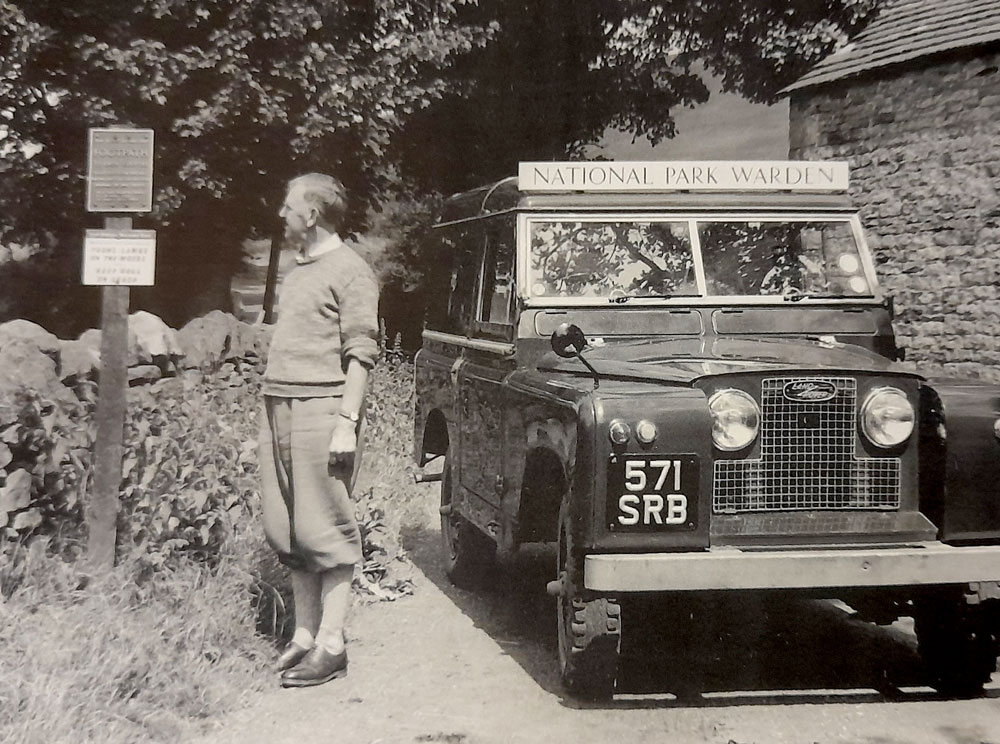
National Parks at 70: time to make them fit for the future
22 April 2021
As England’s first National Park (Peak District) marks its 70th anniversary, Andrew McCloy, Chair of the Peak District National Park Authority, explores what the future holds for National Parks in the UK…

Photo: Tom Tomlinson, Peak District National Park Authority’s first warden (copyright: PDNPA)
Seventy years ago this month the Peak District National Park was formally established. Britain’s first National Park remains one of the most popular and accessible, providing a vital green breathing space for millions of people in one of our most densely populated regions and ensuring that 555 square miles of superb upland landscape is kept that way.
It’s likely that the post-lockdown months ahead will once again underline the importance of Britain’s 15 National Parks for our physical and mental good health. Indeed, rewind to 1949 and the National Parks and Access to the Countryside Act was arguably every bit as important as other landmark post-war legislation covering education and the welfare state, helping a shell-shocked nation to rebuild after the trauma of a world war – just as we are starting to do now with a global pandemic.
Visionaries like John Dower realised that access to the health-giving benefits of inspirational landscape and the natural world was vital; but so, too, was the need to protect it in the face of insatiable development that was likely to follow. So why, given all that, are the jewels in our landscape crown presently so under-resourced and under-strength?
An uphill struggle
National Park designation may have been an affirmation of our finest landscapes, but from the start the actual powers and resources of the bodies set up to look after them were surprisingly limited. Local authorities were reluctant to cede power and indeed only the first two National Parks – the Peak District and Lake District – were designated as special or joint planning boards; all those that followed were placed under the tight control of county councils. Meanwhile, vested interests from major landowners to water utilities resisted attempts to open up the countryside, so that in the decades that followed only the Peak District National Park managed to strike any meaningful new access agreements.
Here, too, pioneering visitor services often relied on ingenuity and resourcefulness. Britain’s first visitor centre in a National Park was effectively set up in the dining room of the Old Nags Head at Edale by pub landlord and National Parks campaigner Fred Heardman.
We’ve come a long way since, and there have been some important milestones, not least the Environment Act 1995 which revised the Parks’ statutory purposes and created National Park Authorities (NPAs). The same legislation also placed a duty on public bodies to ‘have regard to National Park purposes’, but 25 years on and this well-meaning phrase lays bare one of our current problems.
‘Have regard to’ is not the same as ‘support’ or ‘further’. Likewise, as I patiently explain to new audiences, ‘national’ parks are in one sense not very national at all: 95% of the Peak District, for instance, is entirely in private hands and the NPA has frustratingly limited powers – or else looks hopefully to other statutory bodies, like Natural England, to carry them out.
Then add to this the fact that Government has cut core funding to NPAs by 40% in real terms over the last decade, so that London opera now receives more public subsidy than all the English National Parks combined, and you can see why I have mixed emotions as my own National Park marks its 70th birthday.
The way ahead?
The Landscapes Review set out 27 proposals to make England’s national landscapes happier, healthier, greener, more beautiful and open to everyone; but the fact that 18 months after its publication and Government still hasn’t formally responded to it – despite repeated calls by Campaign for National Parks (CNP) – speaks volumes. There is much to agree with in Julian Glover’s report (see CNP’s response), not least the bold ambition for nature recovery and making the countryside more accessible and welcoming, even if the wider context is sometimes glossed over and there is scant recognition of the quiet, hard work of so many dedicated National Park staff and volunteers.
So, we need to mark 70 years of National Parks with a reaffirmation of the nation’s commitment to our finest landscapes; to follow through on the actions of the 25 Year Environment Plan; and to make good the Prime Minister’s promise to put nature and biodiversity on a road to recovery by 2030.
As well as an independent charity such as CNP campaigning to protect and improve National Parks, we need a vocal champion for National Parks and Areas of Outstanding Natural Beauty (AONBs) at the highest level. A National Landscapes Service or network, perhaps – that acts as a national advocate for landscape across Government and public bodies, and drives policy and co-ordinates resources. A strengthened regulatory framework, management plans that are bolder, sharper and better scrutinised, and long-term funding certainty are all crucial.
A powerful new national voice at the heart of government would better equip NPAs to deliver on the ground, retaining local representation, accountability and the confidence of local stakeholders. Better resourced and supported, NPAs can then fully realise their ambitious delivery plans and make a lasting difference for people and nature.
For the Peak District, and I suspect the rest of the National Park family, a clear, bold and supportive indication of the way ahead would be the best birthday present of all.
